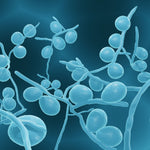By GMP-SOP-Download Laboratory
USP 62 Absence of Candida Albicans
Regular price
£16.99 GBP
Regular price
Sale price
£16.99 GBP
Unit price
per
Tax included.
Shipping calculated at checkout.
Couldn't load pickup availability
SOP and report form for proving the absence of Candida yeast in products according to harmonized methods USP <62> and EP 2.6.13 and to USP <1111> and EP 5.1.4

Regular price
£16.99 GBP
Regular price
Sale price
£16.99 GBP





